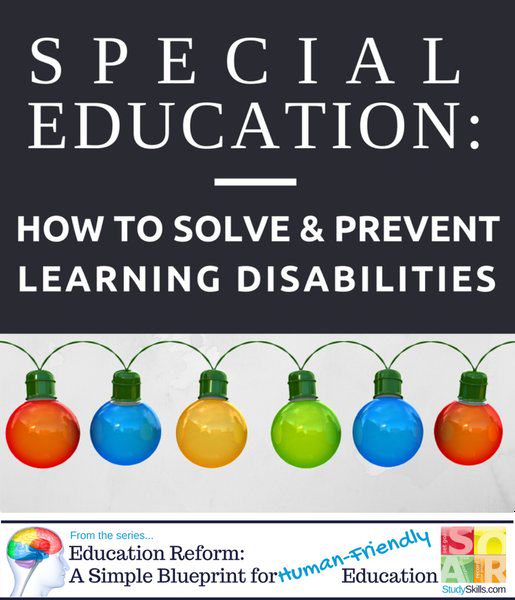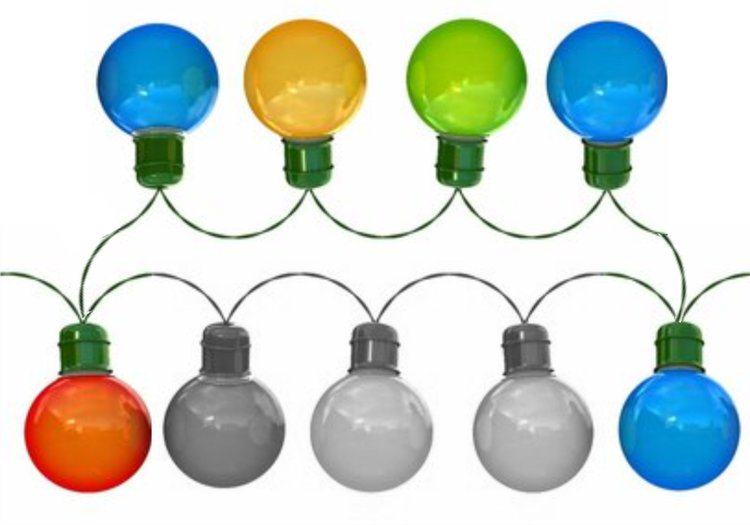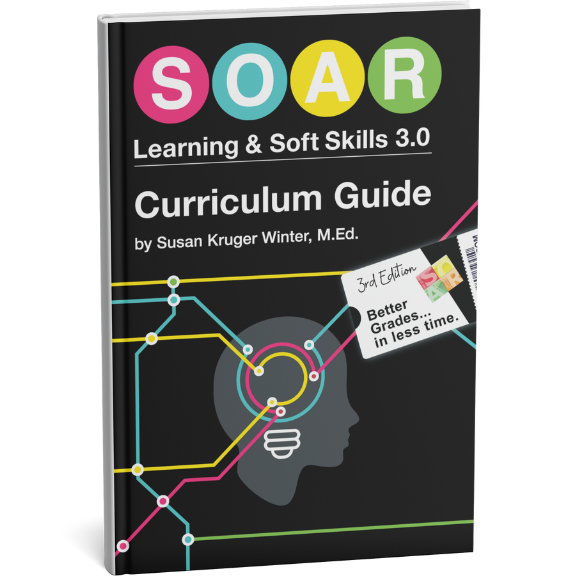Special Education: How to Solve & Prevent Learning Disabilities
This article is from our series, Education Reform: A Simple Blueprint for Human-Friendly Education. For a directory of all articles in this series, click here. To get the full series in one downloadable PDF, sign-up for the free report in the black box on the right.

Welcome to part 2 of our 3-part series on special education. In part I, we explored the brain biology of learning disabilities, which is critical information for making sense of the recommendations below.
How Do We Solve & Prevent Learning Disabilities?
We start with the Success Pyramid.
Since learning disabilities are a biological function of the brain, it remains optimal to follow the Success Pyramid described in a previous article. In fact, students with learning challenges are most in need of the progression outlined in the Success Pyramid.
Success Pyramid Level 1: Confidence
Obviously, students with learning challenges are extremely susceptible to having little or no confidence. As we now know, confidence is the gateway to any learning. So, we must start by emphasizing students’ strengths. As outlined in a previous article, teach students about the Multiple Intelligences. Search for each individual’s superpowers!
Students can only grow and learn when they are confident in their abilities and free of fear.
Success Pyramid Level 2: Self-Management Skills
Once students’ have some confidence, they must learn explicit strategies of self-management. These skills include: communication, organization, time-and-task management, professionalism, etc.
“Self-management” skills are commonly referred to as “executive function” skills (especially in special education) or “soft skills” in the workplace. Regardless of what you call them, the Front Brain manages these skills.
It is a lack of self-management skills that is the primary point of break-down for nearly all students with learning challenges. Our education system does not explicitly teach self-management skills. We expect students to learn them naturally, through observation and osmosis.
However, students with learning disabilities are the students who struggle most with “picking up” on unspoken cues. Remember, they’ve got a lot of broken neuron circuits. They don’t have the bandwidth to notice as much in their environment as we expect. Even if they do observe certain behaviors, their neuron circuits often break-down before they can be processed.
Therefore, it is critical to provide explicit instruction of these self-management (executive function/soft) skills!
We must also ensure that the explicit skills we teach are as efficient as possible. We are working with problems caused by restricted brain power. Therefore, we need to teach strategies with as few steps as possible.
The more efficient a strategy is, the less brain power it will require.
The less brain power a strategy requires, the more successful students will be.
This explicit instruction and efficiency is not just optimal for students with learning challenges. It’s optimal for all students. As human beings, we all prefer clear and efficient solutions.
Finally, we must ensure that students learn these strategies through as many multi-sensory and hands-on ways as possible. The reasons for multi-sensory instruction are explained in the following section…
Success Pyramid Level 3: Learning
Now that students have confidence in themselves and have developed some self-management skills, we can focus on optimizing the learning process.
The key to optimizing learning disabilities is to use stronger sections of the brain to build new circuits around the weaker sections – much like building a detour.

The bulbs in gray represent a weak section of the brain; this is a learning disability. To work around this challenge, we can build circuits with stronger areas of the brain, literally building detours around the learning disability.
How Do We Build Detours in the Brain?
In an earlier article, we covered that all learning is a process of making connections; new learning can only happen if we can connect new information to something we already understand. This is true for all learners.
So, to optimize learning, we must optimize as many connections as possible. This includes connections to:
- previous knowledge and experiences
- feelings and emotions
- observations
- interactions with others
- things we can touch and manipulate
Obviously, the more we can optimize learning connections for all learners, the better.
However, optimizing the number of learning connections for students with learning challenges is critical. These connections are how we build our “detours” around learning disabilities. The more connections we can build to new information –through hands-on practice, peer discussion, real-world experience, etc—the more successful our “detours” will be.
Multi-sensory interventions have always been very popular strategies for students with learning disabilities. The reason? “Multi-sensory” is simply another term for “making many connections.”
Most of us intuitively know that hands-on learning activities are extremely powerful. In fact, the ability to touch and manipulate objects activates brain circuits from several sections of the brain at one time.
The same is true of “social” learning. When we can explore a problem with another person (teacher or peer), exchange ideas and get immediate feedback, we are activating multiple sections of the brain.
The more we can teach new concepts through touch, social learning, and as many other senses and positive emotions as possible, the more successful students will be at building their own “detours.” Of course, multi-sensory learning is optimal for all learners. This is one of the core reasons why learning disabilities don’t exist in a (real) Montessori classroom.
Dr. Montessori Discovered These Solutions Over 100 Years Ago
Through 50 years of careful observation, Maria Montessori witnessed the power of social and tactile learning across all students, all ages, and multiple cultures. As a result, she designed her classrooms to promote collaboration. She also designed extensive hands-on teaching materials that are still relevant today.
Dr. Montessori believed that “the hands are an extension of the brain.” 100 years later, neuroscience confirms this to be true. We now know that our brain and skin developed together –out of the same originating cell—when we were embryos. Our hands contain significantly more neuron connections to the brain than any other part of our body.
As human beings, we were designed to learn through our sense of touch, feeling, and manipulating objects. We were also designed to learn from each other, through collaboration and communication.
We were not designed to learn through abstract representation of concepts presented in lectures and textbooks. This disconnect, along with a lack of explicit self-management instruction, contributes to most cases of “learning disabilities.”
When all instruction is provided in a human-friendly way (according to the Success Pyramid), multiple brain connections are built. Without struggle or special interventions, we automatically use stronger sections of the brain to build detours around weaker sections.
Students Must Understand How Their Own Brains Work
The information in this article is not only important for educators. It is CRITICAL for students. When students are diagnosed with learning disabilities (including ADHD or autism*), all they hear is “Something is wrong with me.” “I must be stupid.”
It’s no surprise that the #1 complaint I hear from special ed teachers is that their students are totally apathetic:
“They don’t understand their disability.”
“They don’t believe in themselves. I see their potential, but they don’t.”
“They are so hopeless!”
Learning disabilities are nothing more or less than a biological –or “medical”—condition. When we are diagnosed with a “lacerated intestine,” we are sent to the hospital. We are fixed. We even get flowers and are celebrated as we are wished a “speedy recovery.”
So, when our students are diagnosed with a learning disability (including ADHD or autism), we must do everything in our power to help them understand the biological side of their challenge. When they understand the simple biology of what’s happening in their brain, the problem is no longer a moral failure.
They no longer need to feel “stupid.” Instead, it becomes a medical situation. A medical situation with real solutions. Solutions that provide HOPE.
And, then, they can celebrate. Because they will discover that they CAN be successful.
Conclusion – Part I & II
Across the United States, nearly half of all special education cases are learning disabilities. However, these so-called “disabilities” are largely a result of our failure to teach according to human development. We are totally ignorant of the brain biology of learning and millions of students are needlessly suffering.
Learning disabilities are nothing more or less than a weak power supply in a few, small sections of the brain. We can use stronger sections of the brain to help students build “detours” around the weaker sections.
If we follow the model of the Success Pyramid and provide COMPLETE HUMAN EDUCATION in a way that is consistent with how our brains work, we can eliminate most learning disabilities.
As the Success Pyramid illustrates, the core foundation for success is that each student must have confidence in their strengths. Without confidence, every other effort is futile.
The next level of the Success Pyramid is “self-management.” This is typically the area where students with learning challenges break-down. They need explicit and efficient instruction on skills for: communication, organization, and time-management.
The final level of the Success Pyramid is “learning.” The way to optimize learning for any learner is to make as many connections to new information as possible. The best way to build learning connections is to provide instruction with as much social and multi-sensory support as possible. These methods generate a massive number of neuron connections all across the brain. These connections are what allow us to build “detours” around learning disabilities.
Students must be empowered with a clear understanding of how their brains work and how learning disabilities work.
The final article in our 3-part series on Special Education looks at the Brain Biology of ADHD & Autism. ADHD & Autism are serious and growing concerns impacting special education. But, once again, when we understand how the brain works in these situations, we can make clear decisions about how to navigate the challenges they present.
To our students’ success,
Susan Kruger, M.Ed.
Students with Intensive Physical and/or Cognitive Impairments
Approximately half of all special education students have physical and cognitive impairments requiring more intensive therapies and/or interventions beyond the Success Pyramid model.
HOWEVER, the Success Pyramid model is still core to achieving success with these students. Complete Human Education is just as important for their ability to grow and be the best version of themselves as possible. They will only be able to reach their full potential when we educate them according to our shared basic needs as human beings, as modeled in the Success Pyramid.
Education Reform: A Simple Blueprint for Human-Friendly Education
This article is from our full report on education reform. Portions of the report will be released on a weekly basis in article form (see the directory below).
However, to access the full report (in its entirety) now, sign-up in the black box on the right.
Education Reform Article Directory:
- Introduction to Education Reform: A Simple Blueprint for Human-Friendly Education
- Three Core Problems with Education in the United States
- The Success Pyramid: A Model of Effective & Efficient Learning
- The Brain Biology of Learning: Why the Success Pyramid Works
- Solutions for Core Problem #1 with Education in the United States
Solutions for Core Problem #2 with Education in the United States
Solutions for Core Problem #3 with Education in the United States - Special Education: It Doesn't Have to Be So Difficult - Part I of III
Special Education: How to Solve & Prevent Learning Disabilities - Part II of III
Special Education: The Brain Biology of ADHD & Autism - Part III of III - Ideal Instructional Models: Successful Examples of Complete Human Education
- Finland: A Political Model of Education Reform
- Why Common Core Is the Worst & BEST Thing to Happen to Education
- The Simplest Leverage Points in Reading, Math, & Skills Instruction
- Looking Forward: Advice from a Futurist
- Conclusion: The Four Principles of Optimal Instruction
- Summary: An Ideal School System
SPECIAL REPORT: To get the full series in one downloadable PDF, sign-up for the free report in the black box on this page.

Six Steps
Conquer the Chaos
Get Our Free Guide & Information on...
 How to Organize & Motivate Students for Success
How to Organize & Motivate Students for Success
"*" indicates required fields
Get Our FREE Curriculum Guide!
The SOAR® Curriculum
The most critical learning, organizing, and communication skills needed for school. Learn more here.
Who’s Using SOAR®?
SOAR® Guarantee
Click here to learn more.






